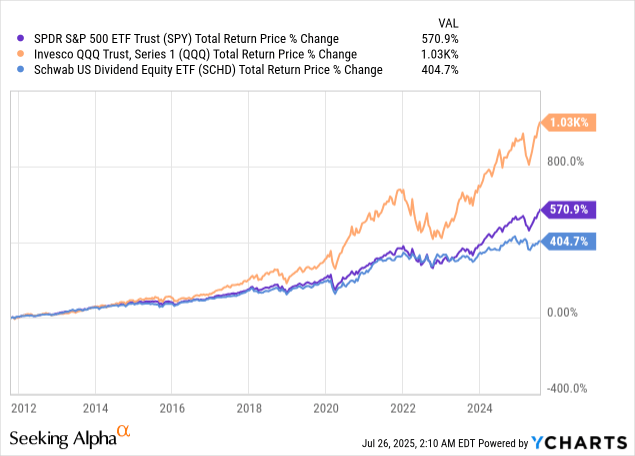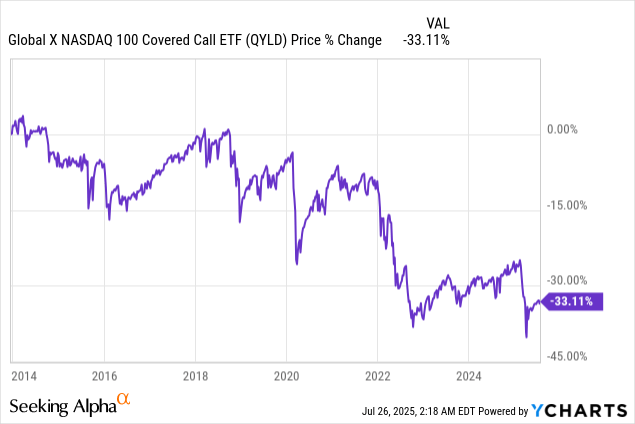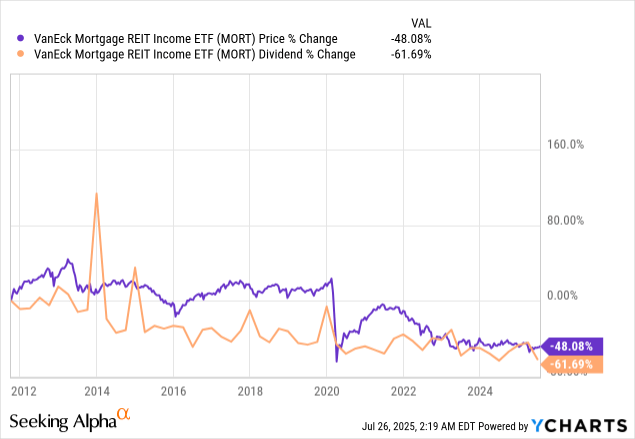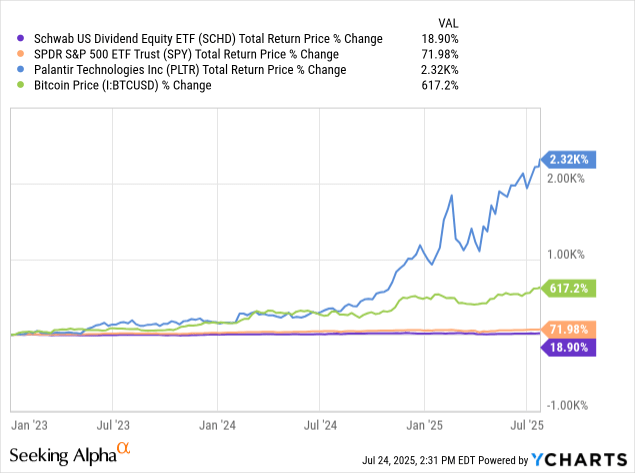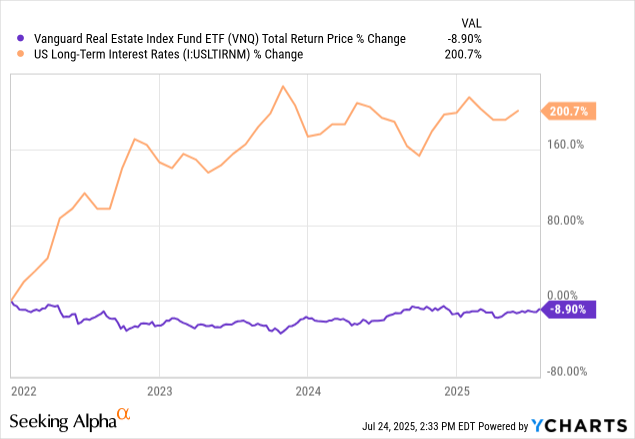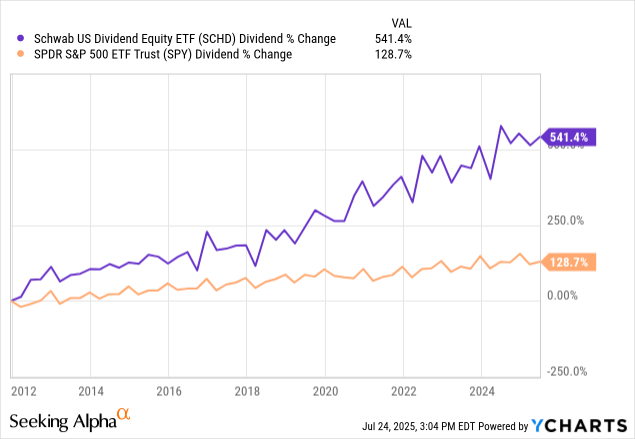5 New Dividends in 2025 (Including an 8.8% Yielder)
Brett Owens, Chief Investment Strategist
Updated: July 28, 2025

Brand new dividends are often the best divvies to buy. Here why.
Companies typically initiate a new payout when they are serious about it. This means not only is management going to make sure the dividend is adequately funded, but they are also likely to raise it in a year.
Perennial raises command our attention because these growing payouts tend to pull their stock prices higher. This is the “Dividend Magnet” phenomenon we often discuss and highlight in my Hidden Yields research advisory. The most lucrative stocks to buy today are the ones that are growing their payouts the fastest tomorrow.
Let’s welcome these five new divvies into the world—and explore whether they are worth our retirement capital.
Millrose Properties (MRP)
Dividend Initiation Announcement: March 17, 2025
First Dividend Payment: April 15, 2025
Dividend Amount: $0.69 (Quarterly)
Dividend Yield: 8.8%
Millrose Properties (MRP) made 2025’s biggest income splash by coming out of the gate swinging with an 8%-plus yield.
Millrose is a real estate investment trust (REIT), and an unusual one at that. MRP—which was spun off by homebuilder Lennar (LEN) in 2024 and started trading in February 2025—exists to buy and develop residential land, then sell finished homesites back to Lennar and other homebuilders through option contracts with predetermined costs. Lennar, for instance, will pay Millrose an 8.5% annual option fee.
This is a first-of-its-kind REIT, so we’ll need Millrose to register a few more quarters’ worth of results before we can really dig in and understand what normal operations are supposed to look like. But what we do know is that so far in its short history, everything is pointed in the right direction.
MRP is Serious About Dividends
An additional bonus that we can’t see in this chart? Millrose has already delivered a dividend hike.
Yes, the dividend line is pointed up and to the right, but that’s because MRP paid a prorated dividend in April before paying a full one in July. However, in its inaugural dividend announcement, Millrose noted that the 38-cent prorated dividend would equate to a 65-cent dividend on a normalized basis—meaning July’s payout actually represents a 6% increase.
MRP, welcome to our Contrarian Outlook watch list! I’ll be monitoring this stock to see if it is indeed a future fit for Hidden Yields or Dividend Swing Trader.
Bristow Group (VTOL)
Dividend Initiation Announcement: Feb. 26, 2025
First Dividend Payment: TBD (Projected Q1 2026)
Dividend Amount: $0.125 (Quarterly)
Dividend Yield: 1.4%
Bristow Group (VTOL) is a global provider of “vertical flights solutions” (read: helicopter transportation), operating a fleet of aircraft across six continents.
VTOL is technically an energy-sector stock, as its primary business (~70% of revenues) is providing helicopter transport to offshore energy customers. However, another 25% of its revenues come from providing search and rescue (SAR) and aircraft support solutions to government and civil organizations, and the remaining sliver of sales comes from corporate and other services.
Bristow Group’s roots go back to 1955, when the company was known as Bristow Helicopters. It has gone through several changes in ownership throughout the years, and it even was forced to enter Chapter 11 bankruptcy protection in 2019 after years of net losses. But it re-emerged as a public company in June 2020, under the ticker VTOL, when it merged with fellow helicopter operator Era Group.
Operationally, Bristow has shown significant improvement over the past few years. It finally turned a profit in 2022, and though it slipped to a thin loss in 2023, it followed that up with a spectacular 2024, delivering its biggest full-year bottom line in a decade. Management is confident that’s no fluke—or at least, that’s what we can reasonably assume given its February 2025 announcement that the company planned on initiating a dividend program.
But VTOL’s dividend announcement is one of the weirdest ones I’ve ever seen. Bristow said it will start paying 12.5 cents quarterly—starting in February 2026. That’s a full year’s worth of advance notice!
Maybe Bristow hopes a slow-boil hype cycle will give its stock some life. Nothing else has seemed to.
VTOL Has Been “Dead Money” Sans Dividend
WillScot Holdings (WSC)
Dividend Initiation Announcement: Feb. 18, 2025
First Dividend Payment: March 19, 2025
Dividend Amount: $0.07 (Quarterly)
Dividend Yield: 0.9%
When we think about the “space” business, we typically think about self-storage REITs like Public Storage (PSA) and Extra Space Storage (EXR).
But WillScot Holdings (WSC) makes those companies look like one-trick ponies.
WillScot (not a REIT, by the way) designs, delivers and services on-site, on-demand space solutions. That includes jobsite trailers, portable container office trailers, temperature-controlled refrigerated trucks, blast-resistant modular buildings, and its “Flex” modular office solutions “that are vertically stackable for evolving workspace needs.”
A Temporary Two-Floor Office? Coming Right Up!
Credit: WillScot.com
Space, as it turns out, is indeed a growth business. WillScot’s top line has been growing without interruption since 2017. Meanwhile, WSC flipped from annual losses to a profit in 2020 and hasn’t looked back—though those earnings have been extremely variable.
WSC Shares Have Been as Inconsistent as Profits
Not variable enough, however, to prevent WillScot from announcing its first dividend. In February, it announced it would begin paying a modest 7-cent quarterly dividend starting in March.
The short-term pain might not yet be done for WSC shareholders, either; full-year 2025 could see both the top and bottom lines contract, if the experts’ prognostications are correct. But even then, WillScot’s new payout is less than 20% of weak 2025 earnings projections, indicating plenty of room for WSC to become a more serious dividend player down the road.
Western Digital (WDC)
Dividend Initiation Announcement: April 30, 2025
First Dividend Payment: June 18, 2025
Dividend Amount: $0.10 (Quarterly)
Dividend Yield: 0.6%
2025 has also seen a few big blue-chip names kick off dividend programs, including Western Digital (WDC).
Western Digital develops, manufactures, and sells data storage devices and solutions based on hard disk drive (HDD) technology. Its products include internal, external and portable HDDs, data center storage and accessories.
It used to deal in NAND flash memory products, too, until February of this year, when it spun off that part of the business into a separately traded company, Sandisk (SNDK). If that name sounds familiar, that’s because Sandisk operated independently until 2016, when Western Digital bought it out.
In jettisoning Sandisk, Western Digital effectively lost the business (flash) with greater growth potential, but it retained the business (HDD) in which it has a roughly 40% market share and that still has plenty of drivers. Regardless, the broader memory business is an extremely cyclical one—WDC delivered substantial net losses in four of the past 10 years, including 2023 and 2024.
That’s part of why, despite drastically improving fundamentals and projections for robust profits for the next few years, it was a little surprising that Western Digital announced its first dividend just a couple of months after the spinoff—a 10-cent quarterly payout that was first distributed in June.
It’s also surprising because we’ve seen this rodeo before. Western Digital started paying 25 cents per share in 2012, and across several hikes eventually doubled that to 50 cents quarterly by early 2015. However, it had to turn tail and suspend the dividend in 2020 as it needed to invest more in its business and knock out debt.
The current dividend is just 8% of WDC’s projected earnings for 2025, indicating that under normal circumstances, we could be looking at years of fat dividend hikes to come. But the cyclical nature of memory and Western Digital’s past missteps has me wary of expecting too much out of this tech name.
Is WDC’s Dividend the Start of Stability, Or Is More Turbulence in Store?
Regeneron Pharmaceuticals (REGN)
Dividend Initiation Announcement: Feb. 4, 2025
First Dividend Payment: March 20, 2025
Dividend Amount: $0.88 (Quarterly)
Dividend Yield: 0.6%
Regeneron Pharmaceuticals (REGN) is one of the market’s largest biotech companies. Its best-known drugs include Eylea (for eye diseases), Dupixent (for asthma and eczema) and Libtayo (a cancer immunotherapy). Regeneron also works in rare diseases, inflammatory conditions and infectious diseases, using proprietary genetic research and antibody technology.
And this year, the longtime biotech winner finally decided to join Big Pharma in sharing its wealth with stockholders, announcing an 88-cent-per-share quarterly dividend starting in March.
But REGN sure picked an interesting time to do it.
Rarely Do We See a New Dividend While a Stock’s Being Cut in Half
Normally we’d expect a crash like that to be accompanied by a massive dropoff in sales and/or profits. But that’s not what we’re seeing here—at least not enough to justify hacking the stock in half.
- 2024: Revenues +8%, net income +12%
- 2025 (est.): Revs -5%, net income -22%
- 2026 (est.): Revs +6%, net income +11%
The primary concern has been rapid deterioration in sales of Eylea, which accounts for roughly a third of Regeneron’s sales. We can blame competition from Roche’s (RHHBY) Vabysmo as well as several biosimilars. More recently, the stock was also hit when it suffered a surprise Phase 3 trial failure for a COPD drug it has been developing with Sanofi (SNY).
As with any pharma company, a hit to a blockbuster drug only has so many fixes—sometimes it’s additional indications for that drug, but often it’s simply finding replacements from the pipeline. Unfortunately for Regeneron, it could be a few years before it can fully counter what it’s losing from Eylea.
REGN might see stabilization soon—again, sales and profits are expected to rebound in 2026, and its valuation is now cheaper than the broader health care sector. And the dividend? Even including 2025’s expected declines, the payout accounts for just 10% of earnings, so it’s not unreasonable to think REGN could offer us a traditional pharma-esque yield on cost a few years down the road.


